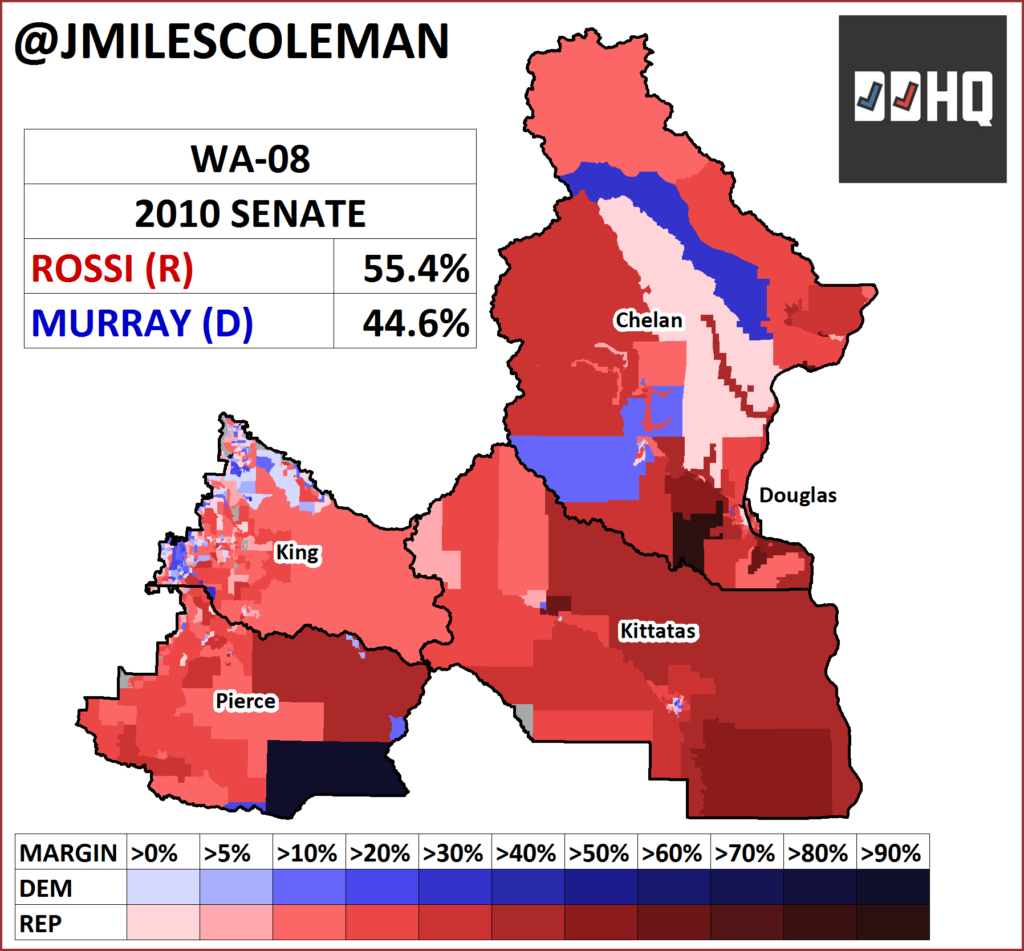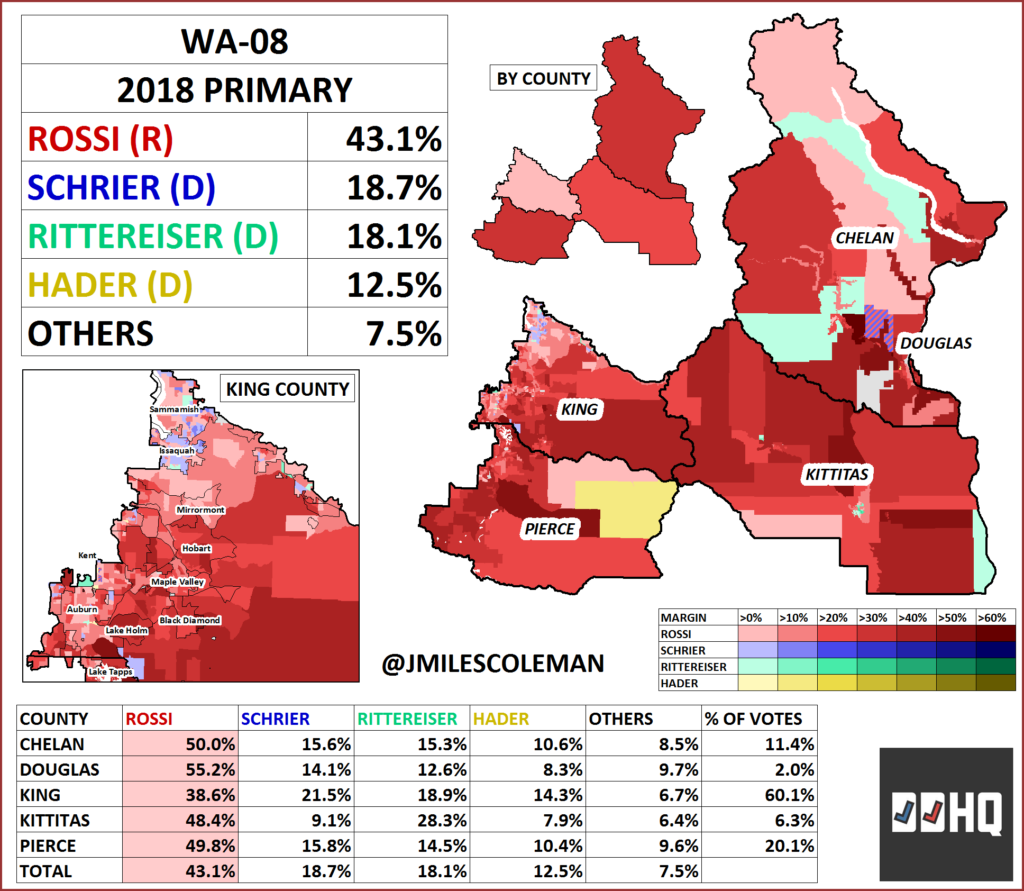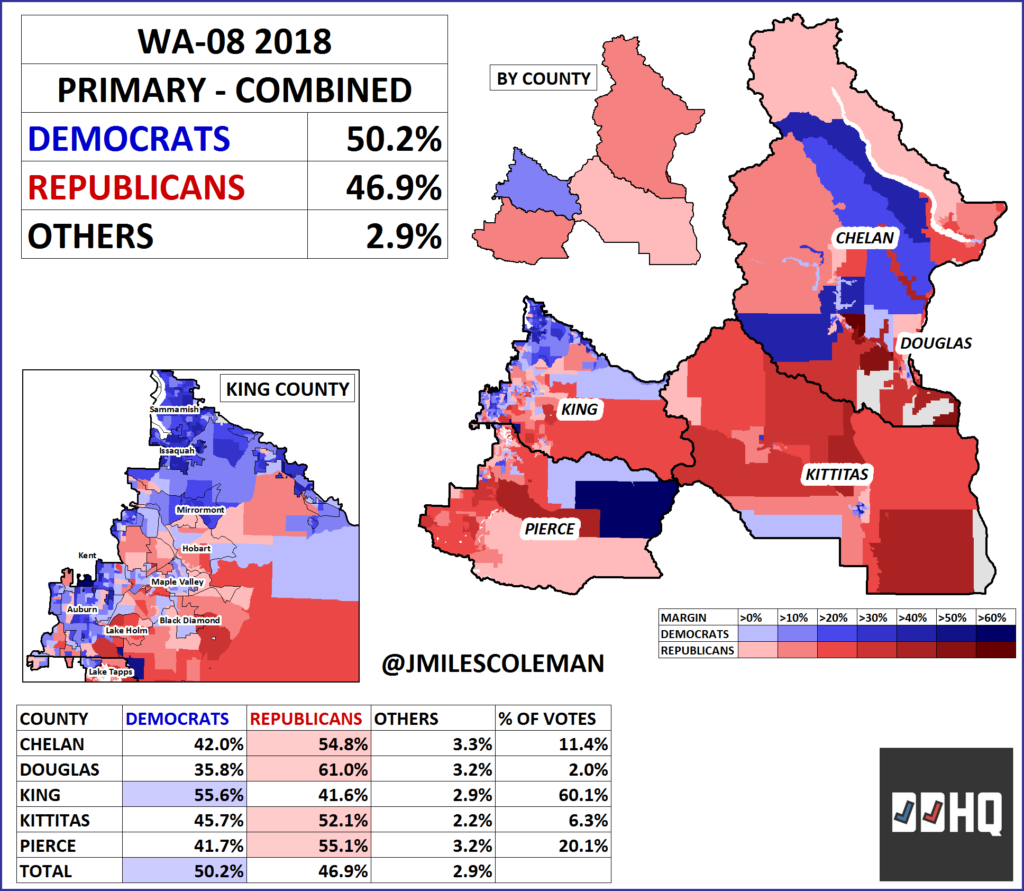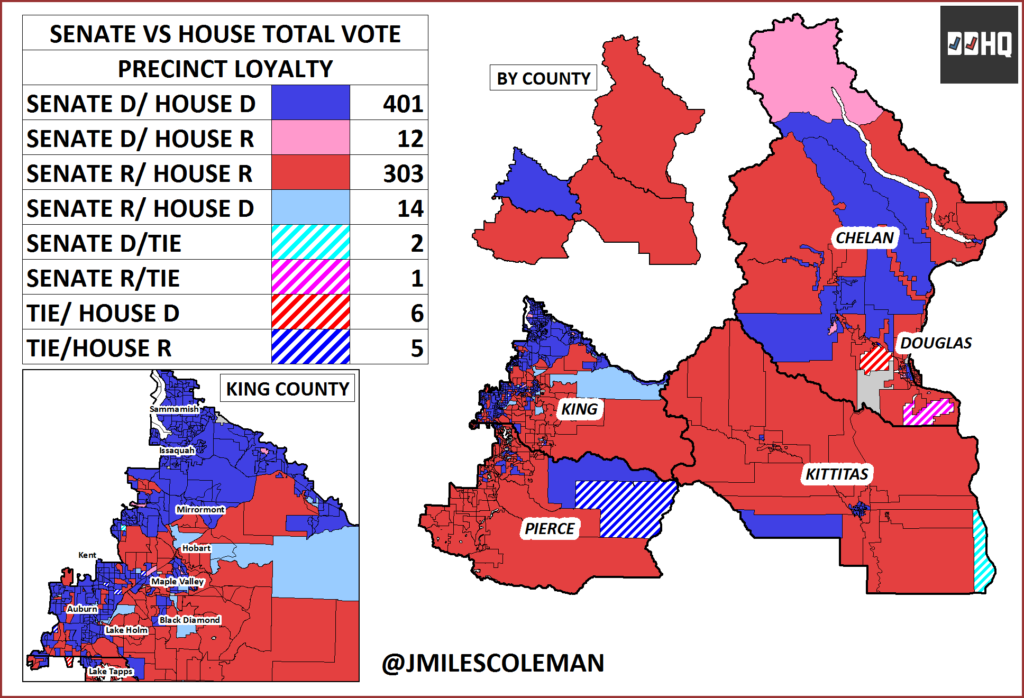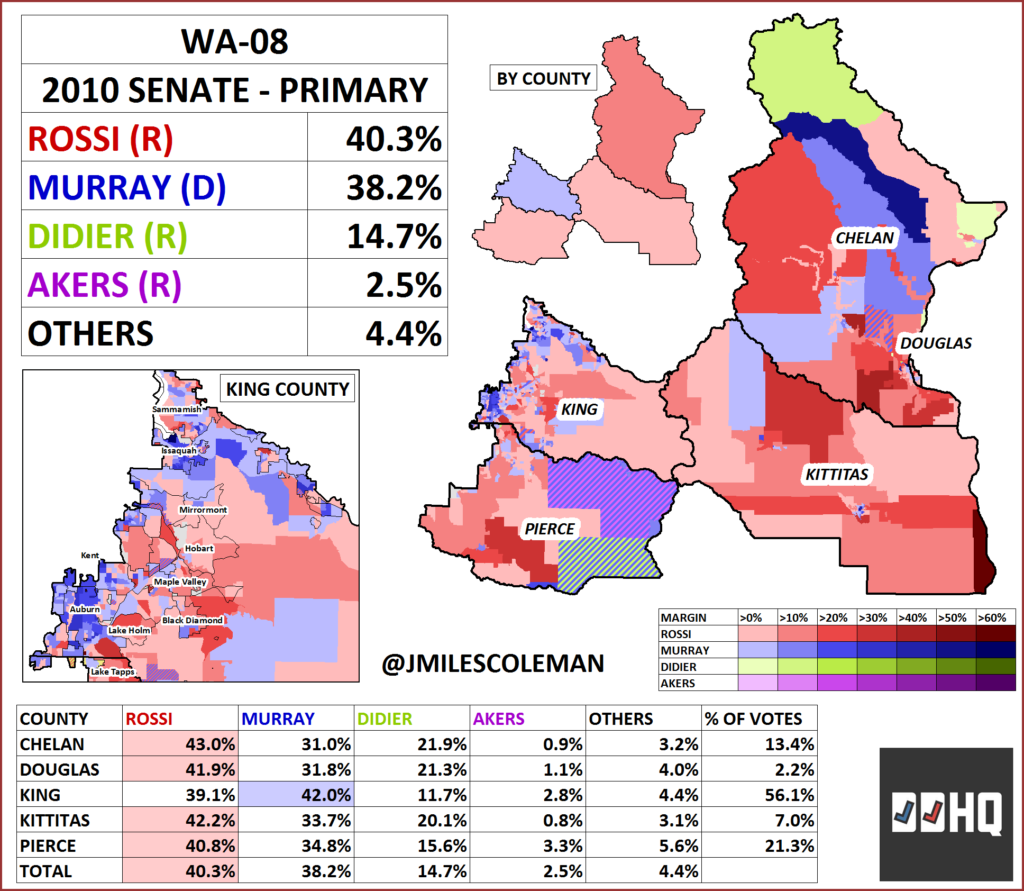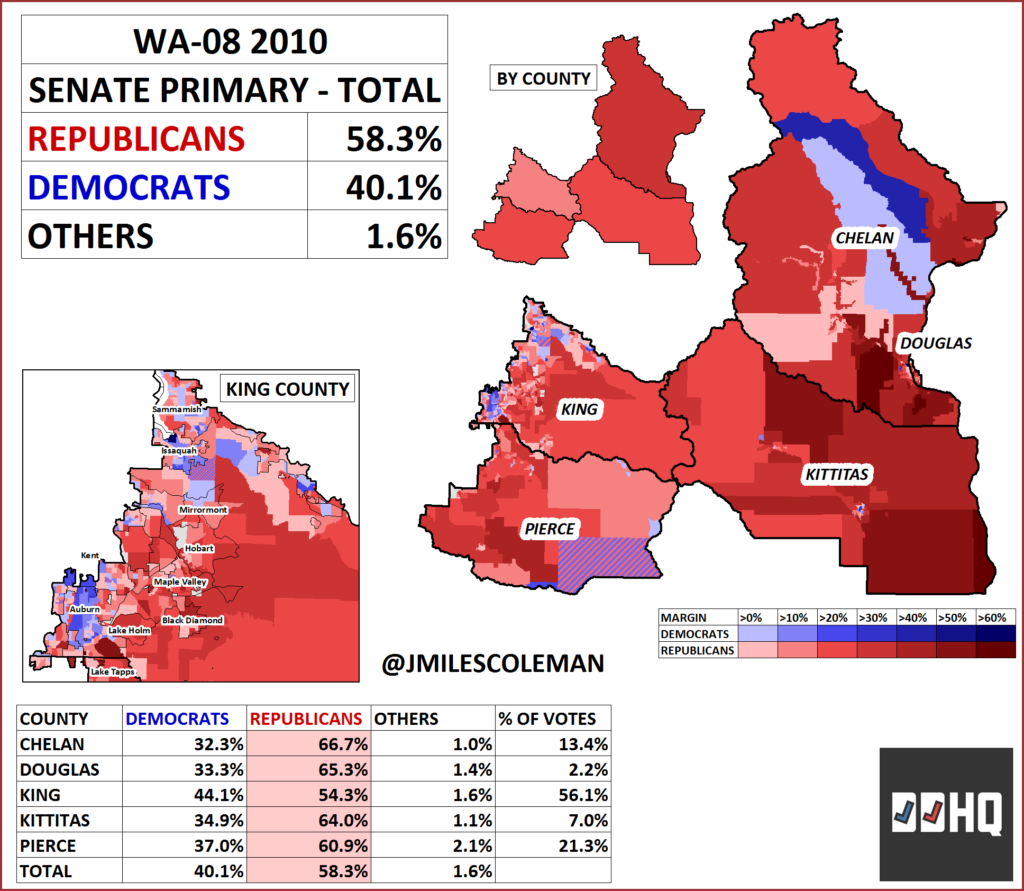One state that had primaries in August was Washington. The Senate race should be pretty secure for the Democrats, the state will feature a few competitive House races. While some Washington Congressional races have popped up on the radar relatively recently – namely WA-03 and WA-05 – both parties have been eyeing WA-08 for about a year.
Washington’s 8th District takes in many communities in suburban Seattle – such as Sammamish, Issoquah, and Auburn – then extends east into the Cascades:
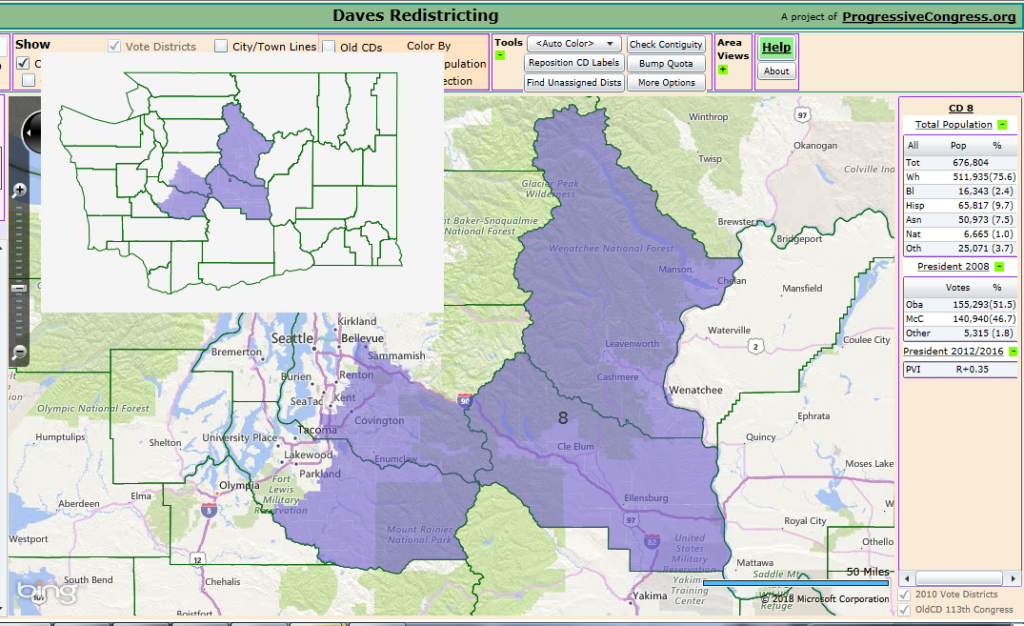
Electorally, WA-08 is significant as it was one of about two dozens districts nationwide that supported Hillary Clinton in 2016, but voted Republican at the Congressional level. Rep. Dave Reichert (R), was the sheriff of King County before his time in the House. He had several close races earlier in his Congressional career, but is popular in the district. He easily won reelction 60/40 in 2016:

In September, Reichert, after holding the district since 2005, announced his retirement. This was blow to the Republicans chances at retaining the seat; even at that point, it was looking the national political environment would be at least somewhat favorable to Democrats.
Still, Republicans landed a solid replacement recruit in State Sen. Dino Rossi (R) of Sammamish. After three statewide races and three tours of duty in the State Senate, Rossi started out with universal name recognition. Rossi lost the Gubernatorial races in 2004 and 2008, as well as the Senate race in 2010. Still he kept all contests close and carried the district comfortably each time. For instance, in 2010, he lost by 5% to Sen. Patty Murray (D), but carried the current WA-08 by 11%:
In Washington primaries, all candidates run on the same ballot, regardless of party; the general election in the fall involves the top two candidates. As Rossi was expected to consolidated most of the Republican vote, he was essentially guaranteed a spot on the general election ballot.
The second place slot seemed likely to go to one of three Democrats. Kim Schrier, from Sammamish, was a doctor who left her practice to run for Congress; she had support from groups like EMILY’s List. Going to south one city to Issaquah, Jason Rittereiser was an attorney, who was seen as closer to the Sanders wing of the party. Sharon Hader, a former CDC worker from Auburn, was the third possibility.
As expected, Rossi took most of the GOP support in the primary; he finished first with 43%. Schrier was able to clinch second place, finishing about a thousand votes ahead of Rittereiser:
Looking at the runners-up in each precinct, it’s easier to see how the Democratic vote split. A big gap appears between Schrier (blue), a more urban candidate, and Rittereiser (green), who did better in rural areas. As Rossi placed first in most precincts, there isn’t much of his red on this map:
Filtering things further, this map only considers the Democratic candidates. Rittereiser was very strong in Kittitas County, taking 62% there; however, the county is relatively small. Schrier finished slightly ahead in the other counties, and had the broadest strength. Hader had pockets of strength in some communities, most notably Auburn. A fourth Democrat, Tom Cramer, ran but wasn’t much of a factor.
On the other side of the spectrum, here are the precincts that Rossi carried. He cleared 50% in about a quarter of the precincts in WA-08; these should be pretty ironclad for him in the fall election. However, he carried most of his precincts with pluralities. Note the King County insert on this map. From Sammamish to Auburn, he posted pluralities in most population centers there; it will be interesting to see how these precincts break in the fall:
Overall, Democratic candidates combined for a tick over 50% of the primary votes in WA-08, compared to 47% for the GOP. This is comparable to the Presidential margin, which was Clinton by 3%, as well. King County, which cast 60% of the vote
s, gave Democrats a 14% advantage, though the Republicans were in the mid-50’s in the other counties:
In the Senate race, Sen. Maria Cantwell (D) took 55% in the primary. She’ll be running against Republican Susan Hutchison, who finished next, with 24%. Narrowing the Senate race down to WA-08, 47% voted for Cantwell, Hutchison took 34%, while the rest was split among the nearly 30 (!) other candidates:
In terms of the combined party votes, the picture was similar to the House primary. Cantwell, and the few other Democrats running, took 50.1% of the votes while Hutchison and the other Republicans received 46.3%:
As the combined vote breakdowns for the Congressional and Senate races were very close, there wasn’t much crossover. In both contests, Democrats combined for more votes in 401 precincts, and the GOP did so in 303 precincts. This meant that 95% of precincts (704 of 744) voted the same way in both races:
Finally, as Rossi was a candidate in the 2010 Senate race, let’s see what that primary would have looked like in WA-08.
In 2010, he finished with a comparable vote share in WA-08, 40%, but this was 2% ahead of Sen. Patty Murray (D). Looking back, this was impressive, given that 1) Murray was the sole major Democrat in the race and 2) two other semi-serious Republicans pulled an additional 17%. Clint Didier (R) ran as a more stridently conservative alternative to Rossi, and took 14%, while Paul Akers (R) took 2.5%.
Combining the candidates into their parties, Republican took a solid 58.3% of the vote in WA-08 to just 40.1% for Democrats. Rossi alone got 40.3%, which was more than the entire Democratic field. Republicans cleared 60% of the aggregate vote in all the counties except for King, which was still 10.2% in their favor. Rossi went on to carry the current WA-08 by 11%.
Notably, King County also had less influence in the 2010 primary. While it cast just over 60% of the votes in the 2018 primary, it was just 56% in 2010:
Going forward, this certainly isn’t 2010, but that result does provide some perspective. In the November election, Rossi should work to shore up the precincts he won with pluralities in the primary – specifically those in King County. Schrier has the national environment, as well as any Cantwell coattails, on her side. She’ll have to consolidate the Democratic vote outside her base, possibly by reaching out to Rittereiser votes in places like Kittitas County. While the President isn’t popular in WA-08, if there’s any Republican that can hold this seat, it’s Rossi.
